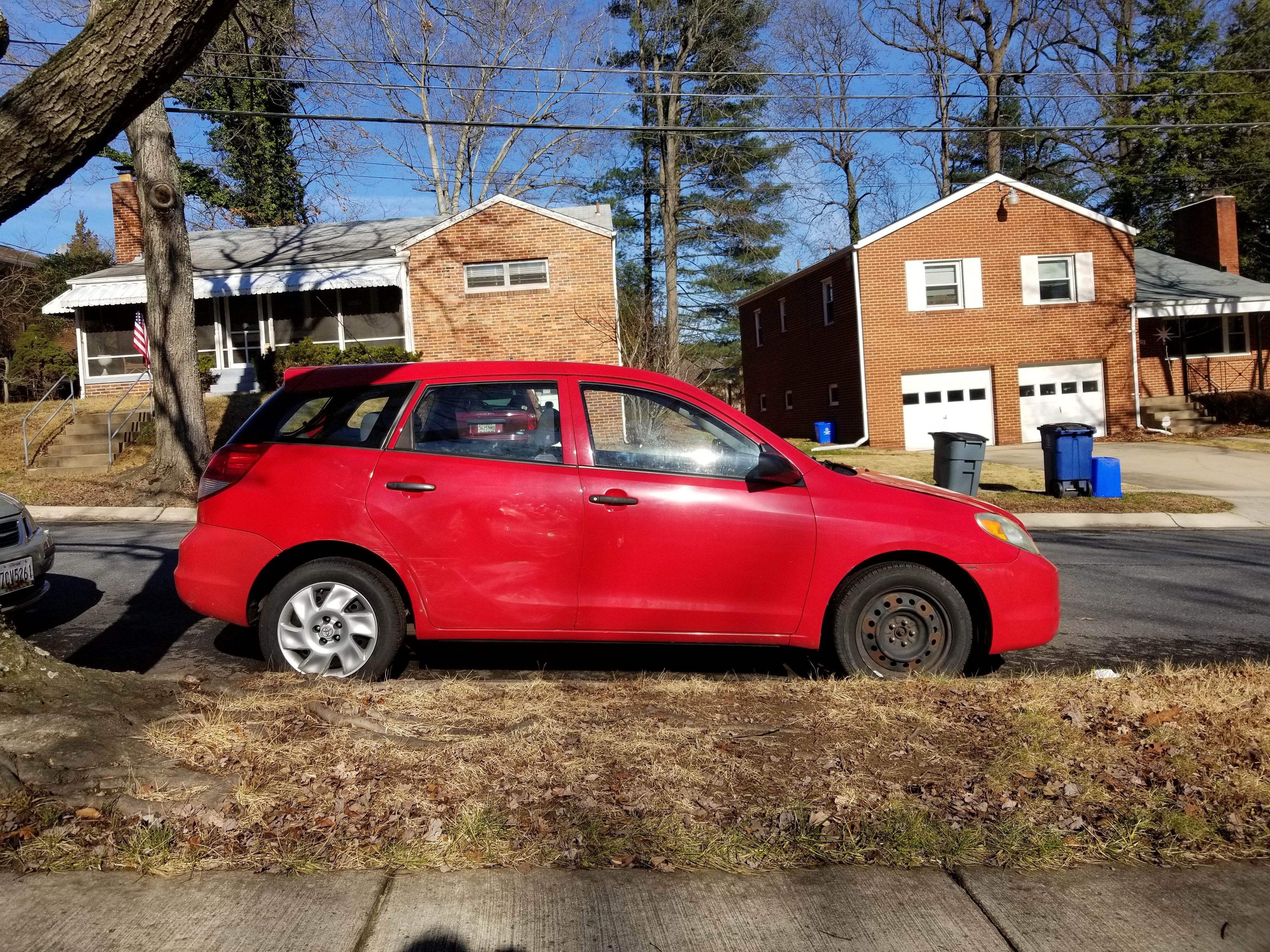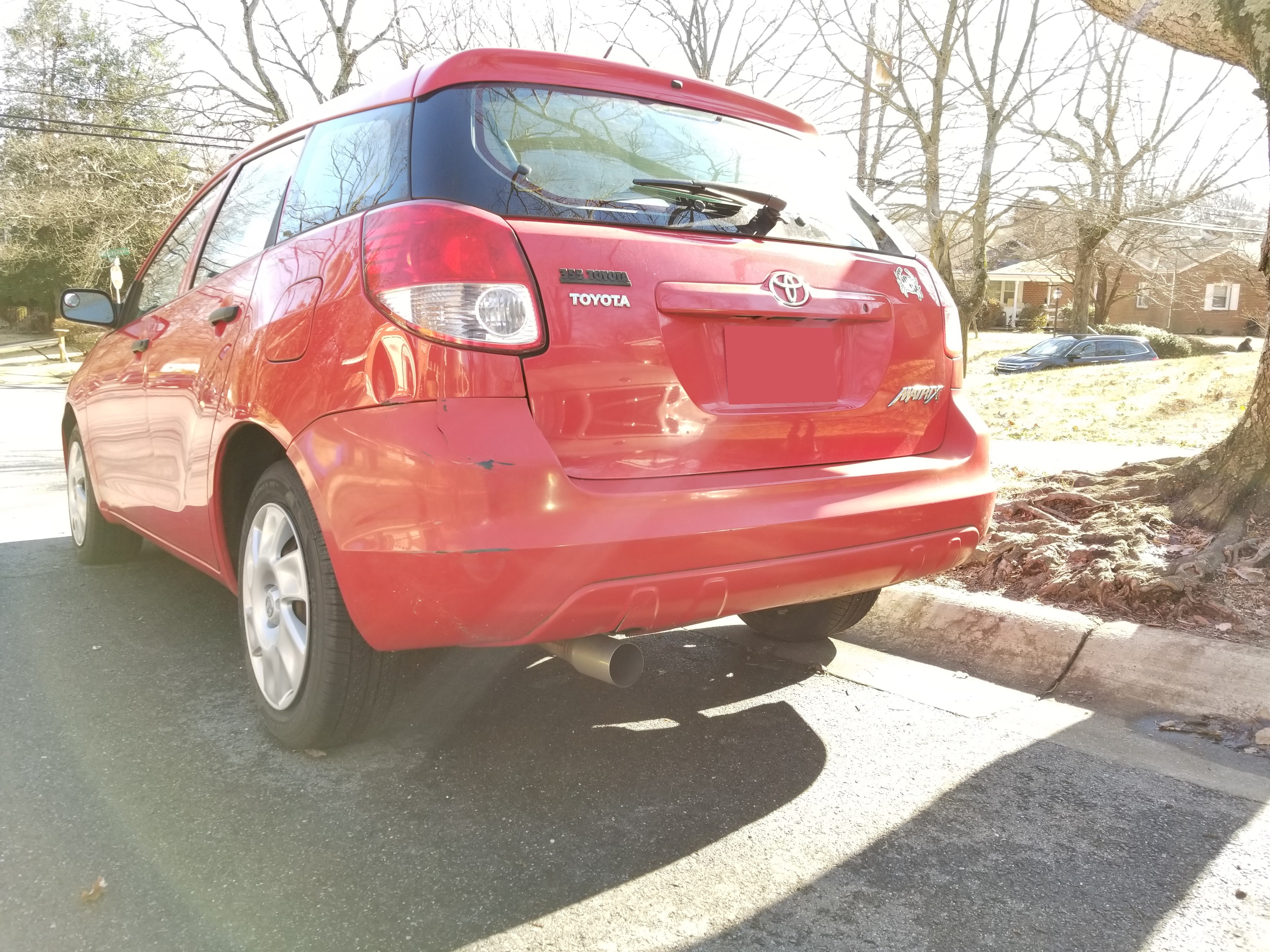What is it?
It's better at being a Scion than any actual Scion models were. It's not that the Matrix came before Scion; the Matrix marque is just as old as the Scion brand, so it's truly beyond me why Toyota didn't just sell it as a Scion. The only rational conclusion I can draw is that it was meant as a strange sort of hot hatch, to complement, rather than compete with, the compact sports coupe tC. Like many small multipurpose wagon/crossover/hatchback vehicles (see the Ford C-Max, Mazda5, Toyota's own Scion xB, and others besides), the Matrix sort of has to serve two masters with regards to its customer base; there will be those who want a compact vehicle with good visibility, a lot of space, and good fuel economy, and there will be those who want to pretend they have a Fiesta ST and live out their hot hatch dreams while not sacrificing on sensible amenities like space and comfort. Many of these cars ultimately aim to serve one better than the other (certainly the C-Max is nowhere close to being a driver's car!), but I did not expect which way the Matrix leant.

What is it like?
From the front it's a Corolla, nothing more, nothing less. From the back it's...different. The sloping roofline and pronounced rear fenders make it feel a little sporty and the wider exhaust outlet makes the exhaust system a little more interesting; just don't look under the back bumper! You'll find rear drums and a rear torsion beam, which might hurt your confidence if you like to count cards and make all your decisions based on numbers. We'll get to that.

The Matrix is a tall hatchback, but its styling makes it look a little smaller and a little more aggressive than it might have otherwise; Toyota certainly could have made the Matrix strictly as a boxy economy car that looked forgettable and drove worse, but they put enough effort into it to make it distinctive (this didn't seem to work as well for its strange sibling, the Pontiac Vibe.) Inside, the Matrix feels like a very cramped minivan; its high ceiling allows for very upright seats, and the dashboard is also much more upright, with a pedestal-mounted shifter that frees up space between the front seats; this makes it feel very much like a late 90s Dodge minivan, but it unfortunately lacks that inboard armrest for the driver that the Caravan had. A flat-folding rear seat with a hard cargo deck that features embedded T-slot rails makes storage space generous with plenty of options, and the nice big rear windows give it great all-around visibility. Up until the moment you start driving, the Matrix is a polite and perfectly acceptable, if a little flashy, spacious city car.
How does it drive?
Upon turning the key and setting off in the Matrix, the driver will first notice the exhaust note. The matrix does not whir like a well-behaved fan, like many of its contemporaries do. It sounds just a little more aggressive, just a little angrier. The second thing the driver will notice is how light the detents on the automatic shifter are, and the third thing the driver will notice is the throttle response. The Matrix has absolutely no throttle rate limit, like many economy cars with electronic throttles do; instead, it simply goes. The throttle gain in general is fine; I can find neither fault nor outstanding virtue with the sensitivity of the gas pedal itself, but the engine responds nearly instantly to whatever input I give it. There is very little of the torque lag that many automatic-equipped cars suffer from; passing is as simple as putting your foot down, whereas some comparable cars involve applying power half a second before you actually begin the maneuver, to give the powertrain enough time to actually start putting down torque. The Matrix has no such compunctions, and will instead cheerfully offer up power you didn't know it had.
The transmission makes fine choices for normal driving, and when pushed, will usually offer up the right gear at the right time (though it's still nearly impossible to get it to allow you to get above 3500 RPM, which keeps the full power of the engine a little hard to access. Using the selectable first and second gears works fine, though there is a noticeable shift lag between moving the shifter and actually feeling a change; additionally, the Matrix can lock out the overdrive gears, but unlike having a specific non-overdrive shifter detent like some cars do, the overdrive can be toggled on and off with a switch on the shifter stick. This feels good and is easy to access, but can be a little non-intuitive; doing the same acceleration tests in the Matrix as I have with other cars was a little tough because of this. I compare this most directly with my 2006 Civic, which puts overdrive lockout in between normal drive and selectable first and second, which playfully beckons the driver to do their own kickdowns from 4th gear overdrive when passing.
The steering is fine (it's like you're driving a Corolla or something) and the brakes are quite strong enough. They aren't touchy, like some small cars are, but more than enough stopping force is available; that said, the Matrix's brakes might not be its strong suit. At highway speeds, the steering feels looser, with a bit of play in the wheel, but it's not nearly as bad as the aforementioned Caravan.

The rear torsion beam axle doesn't affect cornering at all. I felt no body roll whatsoever in the Matrix and it gave me no problems accelerating through turns; it felt completely planted, and gave me no doubts whatsoever. The Matrix's suspension is responsive enough, and is neither too plush nor too hard; it stays completely out of mind until it's given a corner, at which point it surprises you. The Matrix might just corner better than my 2006 Civic, which has fully independent rear suspension as well as a lower center of gravity.
Between the surprisingly good cornering, quick engine response, reasonably sane transmission, and good, if not amazing brakes, the Matrix is an incredible amount of fun to drive. It's just as happy cruising on side streets for a grocery run or a commute as it is being thrown at twists and turns, at least within reasonable limits.
Who is it for?
The Matrix is for...nearly everyone. Americans hate station wagons and hatchbacks, opting instead for crossover SUVs (I suspect this is because the car industry has successfully painted hatches and wagons as effeminate, weak, and European, while the high-riding crossovers are exciting, sporty, strong, and masculine, despite how mediocre their mechanicals might actually be, but that's worth an entire paper to examine.), so the Matrix is obviously not right for someone who wants a crossover. However, for someone who wants what crossovers have, without demanding a crossover specifically, the Matrix is perfect. It has enough space to function both as a family car but also as a miniature box truck for those infrequent times you have a lot to move. The Matrix feels exciting under the pedal, makes lots of fun noises to impress your date, and takes relatively little effort for highway cruising. The Matrix isn't for someone who wants a hot hatch, since they have higher expectations and would scoff at its power output and rear suspension anyways. However, it's a great first car, it's a great driver's car, and it's a solid option for anyone who wants a simple car that doesn't handle like a slug.